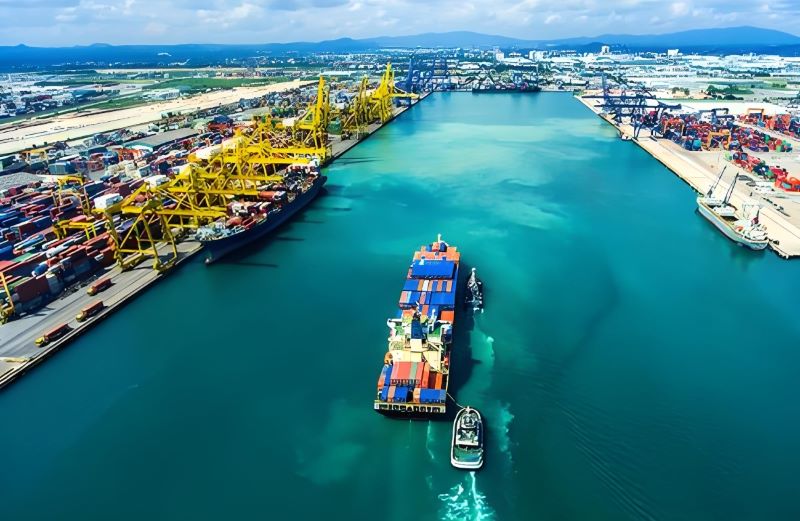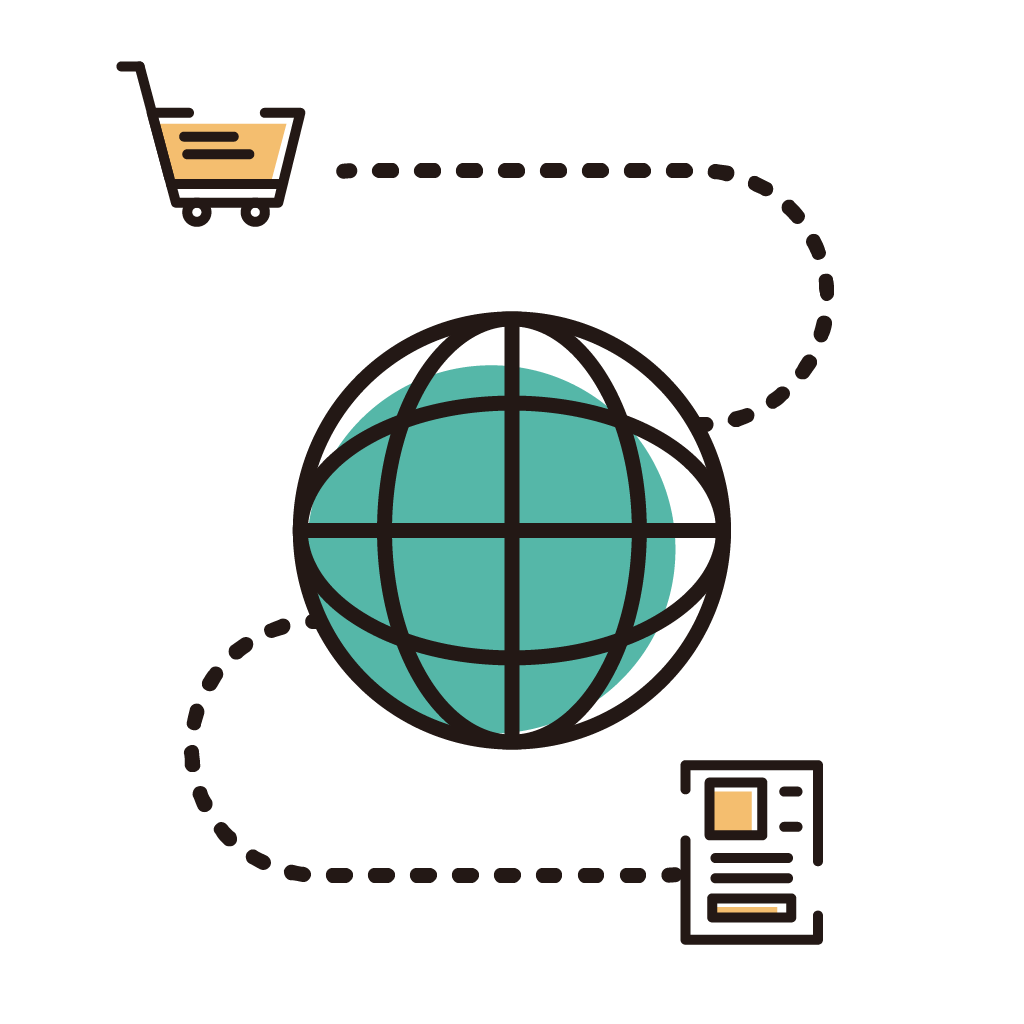In today’s interconnected world, import and export logistics play a critical role in facilitating global trade. As businesses expand internationally, the ability to efficiently move goods across borders becomes essential for maintaining a competitive edge. Whether it’s raw materials, finished products, or specialized equipment, a well-managed logistics system ensures that everything flows smoothly from one country to another.
This blog will explore the key features of import and export logistics, highlighting how these features help streamline global trade, improve efficiency, and ultimately contribute to business success.

1. Optimized Freight Solutions
At the heart of international trade are the freight solutions that move goods from one place to another. Different products require different transportation modes, and selecting the best option is crucial for maximizing both time and cost-efficiency.
Key Features:
Air Freight for Speed: For time-sensitive shipments, air freight is the go-to option. It allows goods to travel quickly over long distances, minimizing delays and ensuring just-in-time deliveries. This is particularly useful for high-value items like electronics and pharmaceuticals.
Sea Freight for Cost-Effectiveness: Shipping by sea is ideal for large, heavy shipments, especially when time is less of a concern. Sea freight offers a cost-effective solution for transporting bulk goods across oceans, making it popular for industries like manufacturing and retail.
Land Freight for Flexibility: Whether used for domestic transport or as a connector between air and sea ports, land freight provides the flexibility to deliver goods to their final destination. This mode of transport can cover vast distances and is often used in multi-modal logistics setups.
Optimized freight solutions ensure that businesses can transport goods efficiently, balancing speed and cost based on the needs of each shipment.
2. Seamless Customs Clearance
Navigating the complexities of customs clearance is one of the most challenging aspects of international logistics. Each country has its own regulations, tariffs, and required documentation, making it essential to work with logistics providers that offer customs expertise.
Key Features:
Customs Brokerage Services: Many logistics companies offer dedicated customs brokerage services, ensuring that all necessary paperwork is completed and that shipments comply with local regulations. This helps avoid delays and potential fines.
Tariff Management: Skilled customs brokers can help businesses navigate tariffs and taxes, potentially reducing costs by leveraging trade agreements or duty exemptions.
Compliance with Global Standards: To ensure smooth customs clearance, logistics providers must stay up-to-date with international trade laws and protocols, ensuring shipments meet all import/export standards.
Seamless customs clearance reduces the risk of delays and ensures that goods move smoothly across borders, contributing to a streamlined logistics process.
3. Real-Time Tracking and Transparency
One of the most valuable features of modern import and export logistics is real-time tracking. Businesses need to know where their goods are at all times, from the moment they leave the warehouse to their arrival at the destination.
Key Features:
End-to-End Visibility: Advanced tracking systems provide full visibility into every step of the shipping process, allowing businesses to monitor their goods in real-time. This transparency helps prevent delays and allows businesses to make informed decisions.
Predictive Analytics: Many logistics companies use predictive analytics to identify potential issues, such as weather-related delays or port congestion, before they occur. This helps businesses plan more effectively and avoid disruptions.
Customer Communication: Real-time tracking also improves the customer experience. With accurate updates on shipment status, businesses can communicate confidently with their customers and keep them informed about delivery timelines.
Tracking systems that offer real-time transparency give businesses the control and visibility needed to maintain efficient supply chains and meet customer expectations.
4. Flexible Warehousing Solutions
Warehousing plays a crucial role in international logistics, particularly when it comes to managing large inventories or waiting for customs clearance. Having access to strategically located warehouses allows businesses to store and distribute products more efficiently.
Key Features:
Proximity to Ports and Airports: Many logistics companies offer warehouses located near major sea and air ports, allowing for faster transit times and easy access to shipping routes.
Scalable Storage Solutions: Flexible warehousing options allow businesses to scale their storage needs based on demand. This is especially useful for seasonal fluctuations, product launches, or unexpected surges in demand.
Inventory Management Systems: Modern warehouses are equipped with inventory management systems that provide real-time updates on stock levels, ensuring that businesses always know what they have on hand and can quickly fulfill orders.
Effective warehousing solutions enable businesses to optimize their supply chain, ensuring timely deliveries and reducing the need for last-minute logistical adjustments.
5. Comprehensive Risk Management
International trade comes with a range of risks, including shipping delays, lost cargo, and damage during transit. To mitigate these risks, businesses need logistics providers that offer comprehensive risk management and insurance options.
Key Features:
Cargo Insurance: Reputable logistics companies offer cargo insurance that covers the full value of the goods in case of damage or loss during transit. This ensures that businesses are protected financially, even if something goes wrong.
Contingency Planning: Risk management also includes contingency planning, which involves having alternative solutions in place in case of delays, route changes, or unforeseen events. A solid logistics provider will always have a plan B ready.
Secure Handling and Transport: From specialized packaging to secure transport methods, businesses can reduce the risk of damage by ensuring that their logistics provider uses the highest standards of handling and security.
Comprehensive risk management gives businesses peace of mind, knowing that their shipments are protected and that any issues will be quickly resolved.
6. Sustainability in Logistics
With increasing awareness of environmental issues, more businesses are seeking sustainable logistics solutions. Sustainable practices not only reduce the environmental impact of shipping but also improve brand reputation among eco-conscious consumers.
Key Features:
Carbon-Neutral Shipping: Many logistics providers now offer carbon-neutral shipping options, where emissions are offset through investments in environmental projects. This allows businesses to reduce their carbon footprint while still engaging in international trade.
Energy-Efficient Transportation: By using energy-efficient vehicles and optimizing shipping routes, logistics companies can significantly reduce fuel consumption and emissions.
Eco-Friendly Packaging: Sustainable logistics providers often offer eco-friendly packaging solutions, such as using recycled materials or reducing excess packaging, to minimize waste.
Choosing sustainable logistics options not only aligns with corporate social responsibility goals but also helps businesses appeal to a growing base of environmentally conscious customers.
7. Advanced Technology and Automation
Technology is revolutionizing the logistics industry, making import and export processes faster, more efficient, and more accurate. Automation, artificial intelligence, and big data are all being used to enhance logistics operations.
Key Features:
Automated Documentation: Automated systems can generate and submit the necessary documents for customs clearance, reducing the risk of errors and speeding up the process.
AI-Powered Route Optimization: AI-driven tools help logistics providers find the most efficient routes for shipments, reducing transit times and costs while also minimizing the environmental impact.
Blockchain for Security: Some logistics companies are exploring blockchain technology to improve the security and transparency of supply chains. Blockchain provides a secure, tamper-proof record of every transaction, ensuring that all stakeholders have access to accurate information.
By leveraging technology, businesses can streamline their logistics operations, reduce costs, and improve efficiency across the board.
Conclusion
Efficient import and export logistics are the backbone of successful international trade. By optimizing freight solutions, streamlining customs clearance, and leveraging real-time tracking, businesses can ensure that their goods move smoothly across borders. Additionally, features like sustainable logistics, comprehensive risk management, and the use of advanced technology further enhance the efficiency and reliability of global trade operations.
As businesses continue to expand into international markets, investing in strong logistics partners that offer these key features will be essential for maintaining a competitive edge and ensuring long-term success in global trade.























